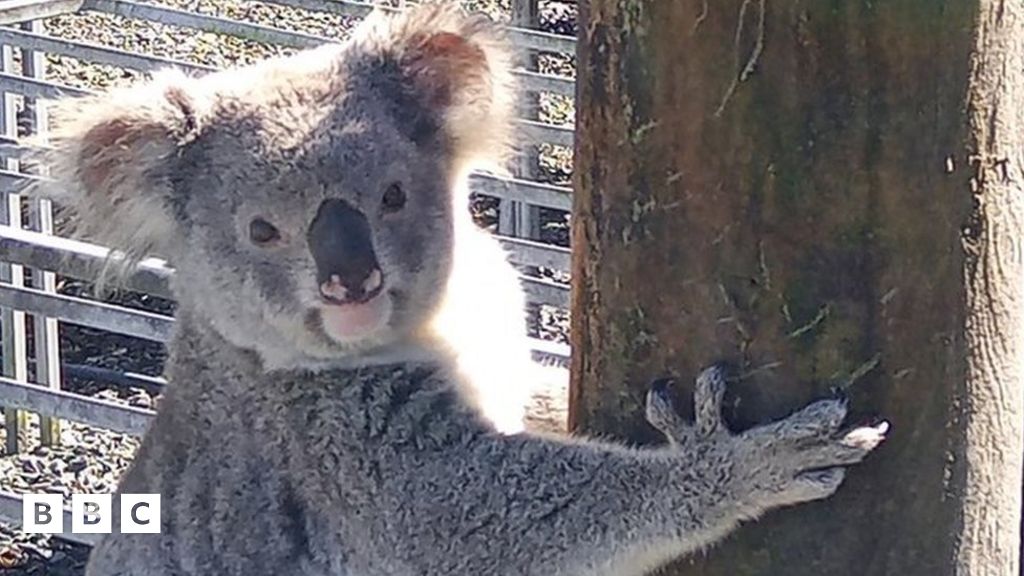Claude the Koala Eating Plants Intended for Conservation Effort Raises Concerns
Core Concepts
Claude's behavior of eating plants intended for conservation efforts raises questions about the impact of wildlife on conservation initiatives.
Abstract
In 2022, koalas faced endangerment along Australia's east coast due to a significant decrease in their population. Claude, a koala, has been suspected of consuming plants meant for conservation efforts, sparking concerns about the balance between wildlife preservation and ecosystem restoration. The incident highlights the complex relationship between endangered species and conservation strategies, emphasizing the challenges faced in protecting both flora and fauna in delicate ecosystems like Australia's east coast.
Claude the koala eats thousands of plants intended for conservation effort
Stats
In 2022, koalas were listed as endangered along most of Australia's east coast.
Quotes
"So there is some concern that Claude may have been stealing simply because he was hungry in the wild."

Deeper Inquiries
How can conservation efforts be balanced with wildlife preservation in delicate ecosystems like Australia's east coast?
In delicate ecosystems like Australia's east coast, balancing conservation efforts with wildlife preservation requires a multi-faceted approach. One key aspect is conducting thorough research to understand the specific needs of endangered species such as koalas and their habitats. By identifying critical areas for protection and implementing targeted conservation strategies, it is possible to safeguard both the ecosystem and its inhabitants.
Additionally, promoting sustainable practices among local communities and stakeholders is essential for long-term success. This includes raising awareness about the importance of preserving biodiversity, enforcing regulations to prevent habitat destruction, and engaging in collaborative efforts with indigenous groups who have valuable knowledge about the land.
Furthermore, integrating technology such as GPS tracking devices or remote sensing tools can help monitor wildlife populations effectively and identify potential threats early on. By combining scientific expertise with community engagement and technological innovation, conservationists can strike a balance between protecting fragile ecosystems and ensuring the survival of endangered species.
What are the ethical implications of accusing animals like Claude of interfering with conservation initiatives?
Accusing animals like Claude of interfering with conservation initiatives raises several ethical considerations that must be carefully evaluated. Firstly, it is crucial to recognize that wild animals act based on instinctual behaviors driven by survival needs rather than malicious intent. In Claude's case, if he was eating plants intended for conservation due to hunger in the wild, blaming him solely would overlook the underlying causes leading to his actions.
Moreover, attributing human-like motives or culpability to animals may lead to misconceptions about their role in ecological systems. It could also create a negative perception towards these creatures instead of fostering empathy and understanding towards their struggles in an increasingly fragmented environment.
Therefore, when addressing incidents involving animal interference in conservation efforts, it is important to approach them from a compassionate standpoint while considering alternative solutions that address both human interests and wildlife welfare without resorting to accusations or blame.
How can incidents like Claude eating plants intended for conservation efforts be prevented in the future?
To prevent incidents where animals like Claude consume plants meant for conservation purposes in the future, proactive measures should be implemented based on a comprehensive understanding of ecological dynamics. One effective strategy involves conducting regular assessments of food availability within natural habitats frequented by endangered species such as koalas.
By monitoring vegetation levels closely and ensuring sufficient resources are accessible for wildlife populations throughout different seasons, conservators can reduce instances where animals resort to consuming protected flora out of necessity. Implementing supplementary feeding programs during periods of scarcity could also serve as a temporary solution while maintaining ecological balance within sensitive ecosystems.
Furthermore, enhancing habitat restoration initiatives aimed at increasing plant diversity benefits not only target species but also supports overall ecosystem resilience against external pressures. Creating buffer zones around designated conservation areas can further deter herbivores from encroaching upon vital plant communities earmarked for preservation efforts.
Overall, preventing incidents similar to Claude's behavior requires proactive management strategies focused on sustaining healthy ecosystems while meeting the nutritional requirements of vulnerable wildlife populations effectively.
0
